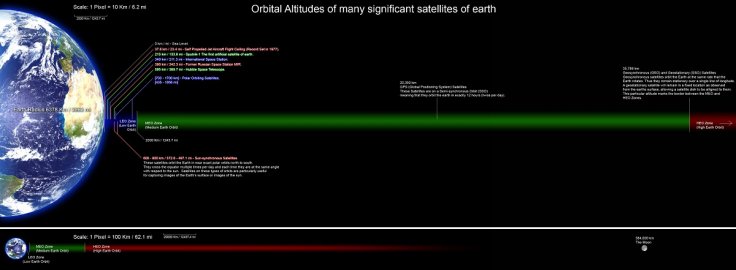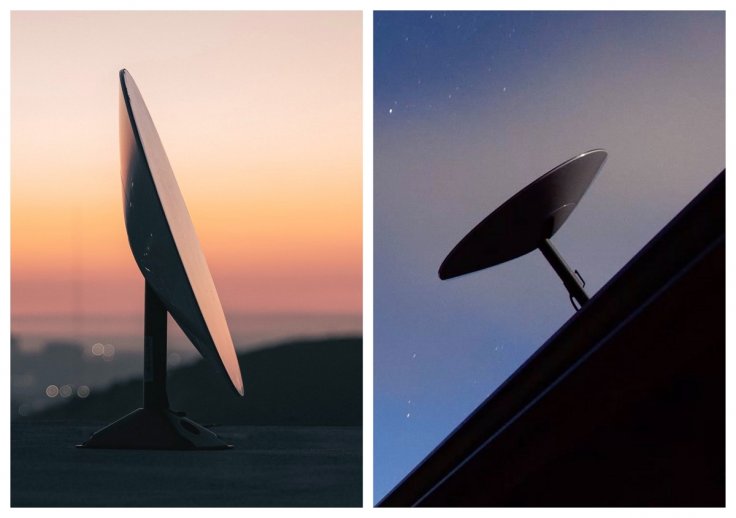Elon Musk among other things has sent over 700 Starlink satellites that would offer high-speed broadband connection to almost everyone in the world including the remotest location. Starlink, a division of SpaceX, will thousand more satellites to complete the Low Earth Orbit (LEO) constellation. However, the U.S. Army believes it can have a secondary offering that would see a nearly undammable navigation system.
Compared to the U.S. military's Global Positioning System (GPS), Starlink's mega constellation can be a low-cost alternative. Considering the Starlink satellites will be in LEO — 550 kilometers (341 miles) above Earth — it has a clear advantage than GPS which has 30 satellites orbiting at a distance of 20,000 kilometers.
The distance from the surface makes it a difficult choice as by the time signal reaches Earth, it loses strength. With minimal interference, it can overwhelm the signal, disrupting navigation service. In addition, signals could be spoofed or jammed.

LEO Satellites
However, LEO offers a better solution because of its distance, making the signal a thousand times stronger. The U.S. armed forces had previously made an attempt at LEO solution, sending spacecraft that were transit satellites at 1,100 kilometers in the 1960s. It could accurately locate Navy vessels and submarines. But the problem was that it could serve only a small area.
However, the University of Texas professors Todd Humphreys and Peter Iannucci from the Radionavigation Laboratory believe with Starlink's vast network of satellites, the problem can be easily solved with just a software upgrade.
In fact, the U.S. Army Futures Command, a unit under the Department of Defense (DoD) visited Humphreys' labs with a different idea. Humphreys co-founded a start-up in 2008 named Coherent Navigation that aimed to use signals from Iridium satellites to provide an alternative to GPS.
The start-up was acquired by Apple in 2015. During the visit, Futures Command officials told him that SpaceX already had an agreement with the U.S. Army to transfer data over the Starlink satellites and asked him if he could use a similar method.

"That got us an audience with people at SpaceX, who liked it, and the Army gave us a year to look into the problem," Humphreys told MIT Technology Review. He even received over $5 million in funding from the Futures Command.
Now, Humphreys and Iannucci have proposed a plan that could see Starlink satellites also providing navigation system relaying GPS signals. It could provide precise location ten times better than GPS and it will be less susceptible to interference. Their research, which is yet to be peer-reviewed, has been published in Arxiv.org.
Starlink the Answer
While the U.S. DoD could build its own LEO constellation for a better navigation system, the cost would be enormous. Thus, a software upgrade would be more cost-efficient as it already has a contract with SpaceX. Humphreys said that each Starlink satellite has a GPS receiver and it can use algorithms that other consumer-oriented satellites can't. Hence, Starlink satellites can offer precise location up to 70 centimeters using the GPS radio signals and then encoding it.

The other factor is Starlink satellites are capable of transmitting data at over 100 megabits per second while GPS satellites can only achieve less than 100 bits per second.
"There are so few bits per second available for GPS transmissions that they can't afford to include fresh, highly accurate data about where the satellites actually are. If you have a million times more opportunity to send information down from your satellite, the data can be much closer to the truth," said Iannucci.
However, there are drawbacks to use Starlink as well. For now, Starlink can only operate over 60 degrees latitude meaning it would not be able to provide a navigational system to most of the Nordic countries and the U.S. military will miss out on a strategic location like Russia. In addition, to utilize Starlink satellites, the U.S. Army will also need to use Starlink antennas that are expected cost significantly as SpaceX continues to commercialize its venture.









